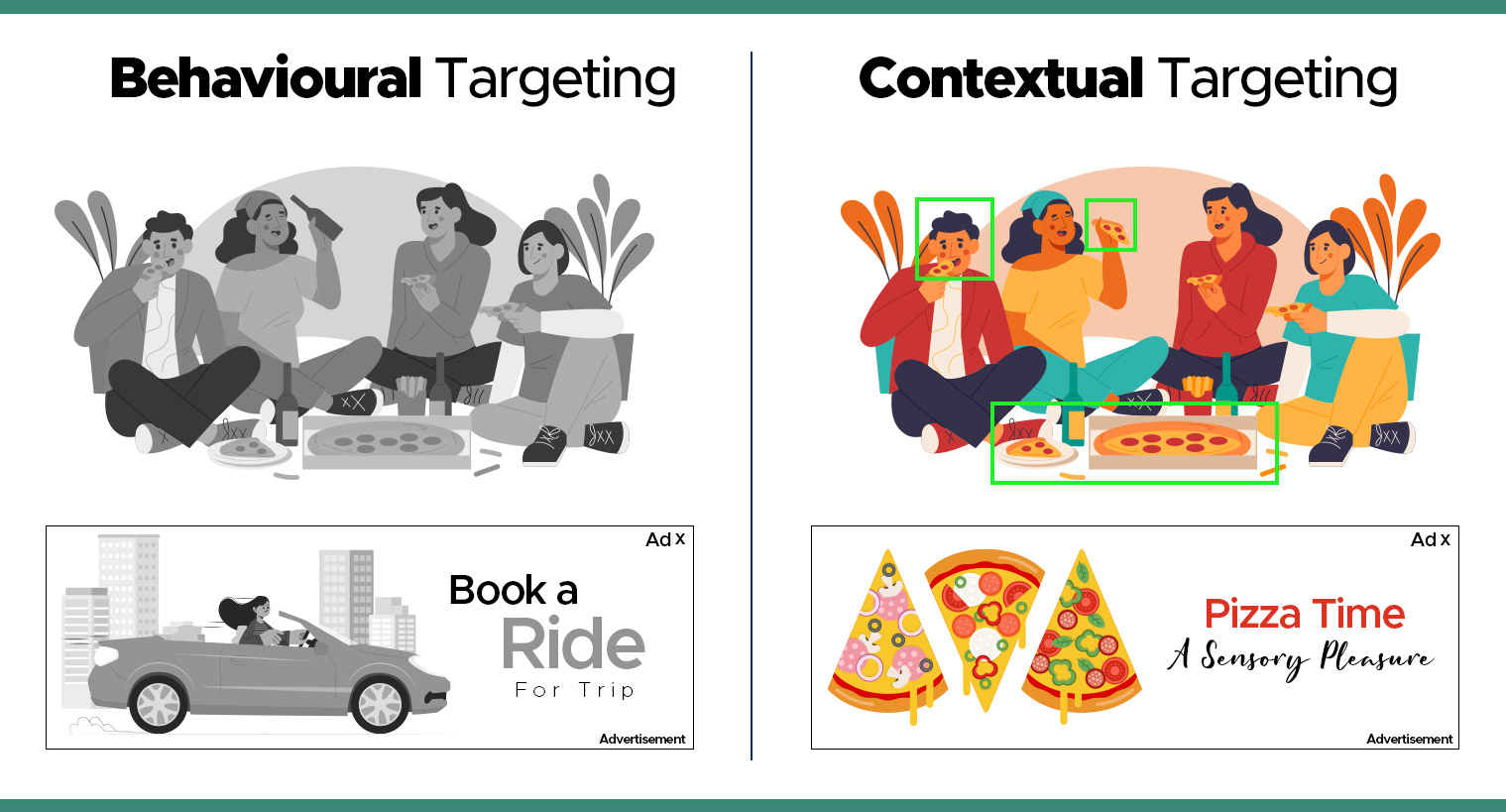Why Should You Consider Contextual Targeting Instead of Audience Targeting? | 06 Sep, 2022

Since third-party cookies are going to fade away soon, audience targeting will face a tough time standing against contextually targeted ads.
Audience targeting has been in the advertising industry for quite some time and has gained enormous traction in the digital marketing space. However, in light of the recent changes done to the third-party cookie, does audience targeting still stand solid?
Audience-based targeting relies on data like individual characteristics, interests, and behaviors to target the viewers seeing a specific ad. This is the major reason which makes it difficult for advertisers to depend on this method in the post-cookie world.
According to statistics, spending on contextual advertising has been predicted to increase to USD 297.68 billion by 2023, from USD 125.79 billion in 2018.
Also, according to an eMarketer survey, about 50% of US marketers and 33.33% of UK marketers currently favor contextual advertising as their preferred targeting format.
The resurgence in popularity of contextual advertising can be seen after several years in 2022 owing to its simplicity and effectiveness while reaching the audience at the right time and place without meddling with their privacy.
For digital advertisers looking to gain the attention of users for their ad campaigns, the most important question is why contextual targeting has an upper hand in the post-cookie era. But, before we dive deeper into this topic, let’s recap the difference between audience and contextual targeting.
Difference between Contextual and Audience Targeting
Which one would you like better?
Viewing an ad for sports shoes while reading an article about Jeff Bezos (because a few days back you were scrolling through the internet searching for gym shoes) or, coming across an ad for sports shoes while reading an article on fitness.
Definitely, the latter!
A survey stated that 66% of consumers admitted they were uncomfortable with businesses and brands tracking their browsing history to show them personalized ads. This is what audience targeting does!
Audience targeting is the method of using data like viewers’ online history, preferences, and actions to segregate consumers or prospects based on demographics, geographical locations, interests, or individual preferences.
Data plays an important role in audience targeting, which is why it relies heavily on the use of third-party cookies to track consumer behavior online.
This has yielded great results for marketers in the past. But as consumers and industry leaders focus more on privacy updates, advertisers need to look to alternative targeting methods.
Contextual targeting proves to be a fantastic and effective alternative to audience targeting. It enables advertisers to use a more privacy-friendly kind of targeting for ad campaigns. It targets potential consumers based on contexts, such as the content of a webpage a user is looking at, location, or the weather in a specific location.
Since it matches the ads with the content of the page to where it is displayed it builds a strong pillar of trust for brands and businesses to connect with their audience.
For example, if a person is reading a movie review, he would see ads related to “purchase movie tickets” or “join up for a movie streaming service.” This is contextual advertising.
Benefits of Contextual Advertising Over Audience Targeting
For some time now, we can witness a sudden shift in the advertising industry from third-party cookies to focusing on the context. Below are a few reasons why contextual advertising is getting an edge over audience targeting.
1. No More Dependency on Third-Party Cookies
A recent study stated that around 72% of Americans are “very to extremely concerned” about their online privacy. Also, about 80% admitted they were more open to seeing ads not requiring their data. Since contextual advertising does not rely on cookies, it is one of the significant reasons why it is gaining popularity among marketers and advertisers.
2. Personalized Content with Improved Customer Experience
79% of consumers are more comfortable seeing Contextual than behavioral ads. Consumers appreciate being presented with more personalized ads than random ads popping out of nowhere. With the use of contextual targeting more relevant ads are shown to the consumers, and these can help the brand improve its ROI.
3. Cost-Effective and Easy to Implement
Unlike conventional advertising strategies, contextual advertising is cost-effective and does not harm advertisers’ pockets. They are only charged for advertisements that are clicked, not for advertisements that are shown on the site.
Last Words
With third-party cookies being phased out, reaching audiences at the correct time and place has become challenging. Silverpush’s flagship product – Mirrors helps in context-relevant video-level ad targeting by identifying key contexts like celebrities, brands, objects, places, actions, on-screen text, and audio for nuanced targeting for more precise targeting.
Content-aligned ad placement, brand safety, and customized brand suitability are all ensured during the process while reaching the potential audience.

BLOGS
Crafting a Winning Mother’s Day Advertising Strategy for 2024: Insights and Trends
As we approach Mother’s Day 2024, brands must prepare to adapt to changing consumer needs and preferences. Considering the current market dynamics and consumer behavior, it's crucial to develop a successful Mother’s Day campaign that extends beyond the day itself. Here's a detailed roadmap to navigating the Mother’s Day market, ...

BLOGS
Win Gold for Summer Olympics 2024 with AI-Powered Video Ads
The Paris Olympic Games 2024 is not merely a gathering of the world’s finest athletes, but it’s a testament to unity, diversity, and the pinnacle of human excellence. The grand spectacle sparks surges in consumer engagement and purchase intent worldwide. Whether you operate shoe boutiques in Ohio, bicycle repair shops ...

BLOGS
Interactive Video Ads: Turn Passive Viewers to Active Participants
Interactive video ads signify a revolutionary change in digital advertising, turning passive spectators into dynamic participants. Through the smooth integration of interactive elements such as touchpoints, quizzes, and clickable features, these ads present an unparalleled avenue for brands to connect with their audience. Viewers are no longer just observers but ...











